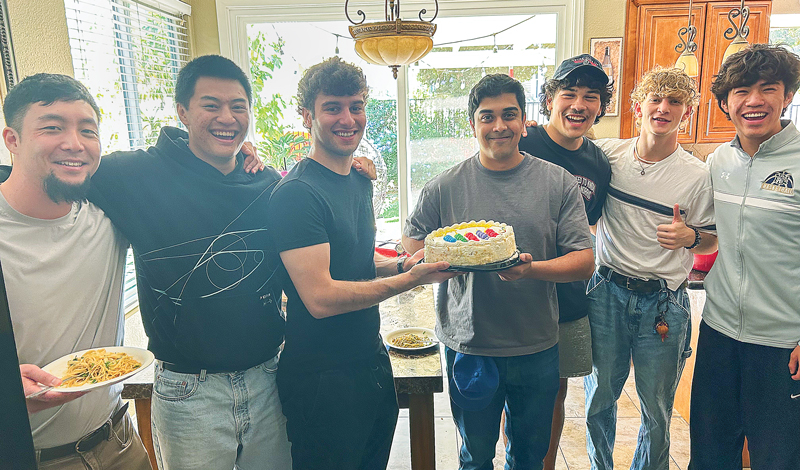NEW YORK—In a state whose motto is “Excelsior,” or “Ever Upward,” the Central Executive Committee (CEC) and Executive Council on Sept. 14 held its third quarterly conference of the year to discuss and vote on the next phase of dynamic development for the SGI-USA, as it prepares to gather 100,000 youthful successors in 2028, marking Ikeda Sensei’s 100th birthday with the emergence of a new force for peace.
In a first for the CEC, the conference was held at the SGI-USA New York Culture Center, a 171-year-old historical landmark in the heart of Manhattan, which serves as the center of activities for East Territory.
The Executive Council, the highest decision-making body, affirmed the guidelines for 2025, setting into motion a series of fresh initiatives toward 2030 aimed at strengthening our youth and the ties within our local communities.
In his opening words, SGI-USA General Director Adin Strauss expressed gratitude and admiration to the members for their tremendous efforts during the victorious Summer of Shakubuku, calling it our first significant step forward since the pandemic. “Buddhism teaches that when the forces of the Buddha step forward, the forces of negativity retreat,” he said.
As we near the one-year anniversary of Ikeda Sensei’s passing, our focus is on creating the most encouraging, well-attended and joyful November district general meetings.
For the SGI-USA, the immediate focus is working hand in hand with district and group leaders to visit the members and deepen bonds of friendship. As we near the one-year anniversary of Ikeda Sensei’s passing on Nov. 15, our collective focus will be creating the most encouraging, well-attended and joyful November district general meetings, celebrating Nov. 18, Soka Gakkai Founding Day. While each district is encouraged to establish its own goal, the SGI-USA aims to gather nationwide 50,000 members and guests.
“It’s important for us to have complete confidence,” Strauss said. “Sensei says if ordinary people unite, there’s no problem we cannot overcome. We should be 1,000% confident in that.”
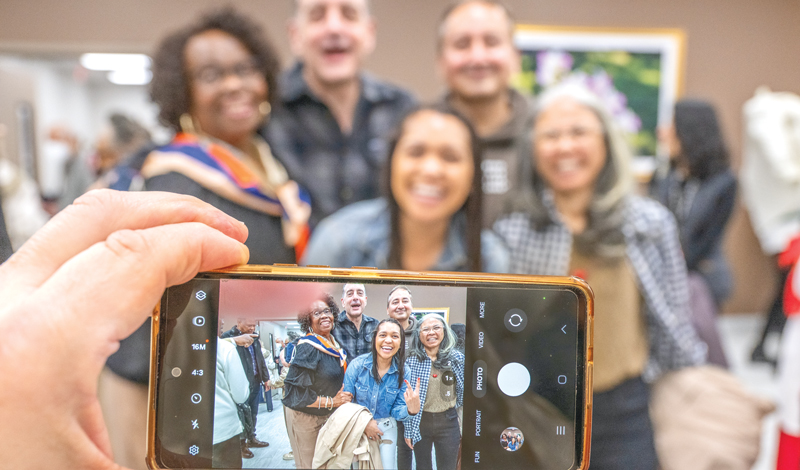
Buddhist Dialogue Rooted in Friendship
On the heels of the highly successful Summer of Shakubuku, the CEC members voted to continue the shakubuku momentum in the autumn, winter, spring and summer seasons (25 seasons, noted SGI-USA Young Women’s Leader Amelia Gonzalez Tesch, toward November 2030) to make this essential aspect of Buddhist practice part of our DNA.
At the September SGI training course, SGI-USA representatives took part in an exchange meeting at the Takatsu Culture Center in Kanagawa Prefecture, where small-group discussions were held with some 50 guests. Among those who decided to receive the Gohonzon was a young man who was invited by his lifelong friend. When asked why he decided to join, he said, “Because we have been friends all our lives, and I trust him.”
The CEC members discussed the importance of shakubuku rooted in friendship as the key to meaningful expansion in America. “If their relationship is only about inviting their guest to three eligible meetings, then those relationships are on the surface,” said Gonzalez Tesch.
She then shared the three stages of sharing Buddhism, which can be likened to the three stages of spreading Buddhism:
1) Sowing: sharing the practice with others and teaching them gongyo.
2) Maturing: developing friendship and trust.
3) Harvesting: conferring the Gohonzon and teaching them a consistent daily practice of gongyo, while helping them study for the Introductory Exam (given every six months).
“We want to make sure that shakubuku is rooted in friendship and trust,” she said. “When they do face a challenge, they can reach out to us and continue to practice and become happy.”
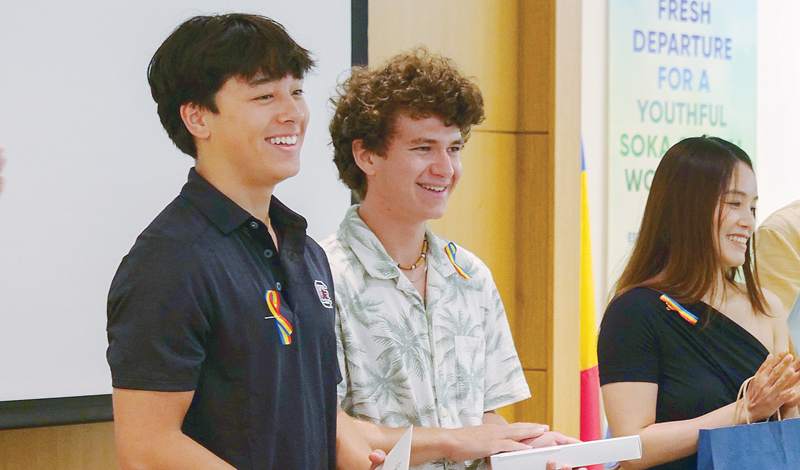
Strengthening Our Youth
Strengthen Youth Leaders’ Daily Practice
Next year, the SGI-USA will assign men’s and women’s leaders to home visit and do gongyo once a week with a chapter through zone youth leader to help them solidify a consistent rhythm of doing gongyo and chanting twice a day.
“We want the youth to experience the power of daimoku,” said Gonzalez Tesch, who tries to chant 30 minutes together at the start of home visits. “When we chant, we can resolve our problems.”
Strauss referred to a passage from volume 1 of The World of Nichiren Daishonin’s Writings in which Sensei explains the meaning behind Nichiren Daishonin’s aim to “establish the correct teaching for the peace of the land.”
Here, the Daishonin explains the fundamental level at which “establishing the correct teaching” takes place. That is, it occurs on the level of the heart. Without a transformation in the inner life of the individual, the correct teaching cannot be established.[1]
“It comes down to gongyo and daimoku,” Strauss said. “This is why, in 2025, we will emphasize a return to the basics.”
Support Junior High and High School Divisions Separately
Since junior high and high school aged youth have vastly different experiences, these divisions will be supported separately, including holding separate conferences in 2025.
While the high school division will continue to hold its annual conference at Soka University of America in Aliso Viejo, California, junior high school division will have their own conference for the first time at the Florida Nature and Culture Center (FNCC) in Weston, Florida.
In the meantime, the SGI-USA future division team plans to launch a website soon that will serve as a central hub for resources, updates, videos, experiences and more.
New Era for Student Division
In a new era for the student division, it will become a stand-alone division in 2025 that will encompass youth between the ages of 18–25 attending college. Youth 18 and older not in college will remain in their respective young men’s and young women’s divisions.
Shota Okajima, SGI-USA young men’s leader, said the change will help the student division deepen their identity and pride.
While the student division will remain under the youth division umbrella, it will have a parallel leadership structure that includes national, territory and zone student division leaders, and campus club leaders.
Their activities will include: campus club activities; a monthly student division study lecture; an FNCC conference; and supporting their monthly district discussion meetings. They will also continue to support activities behind the scenes as Byakuren, Soka Group and Gajokai.
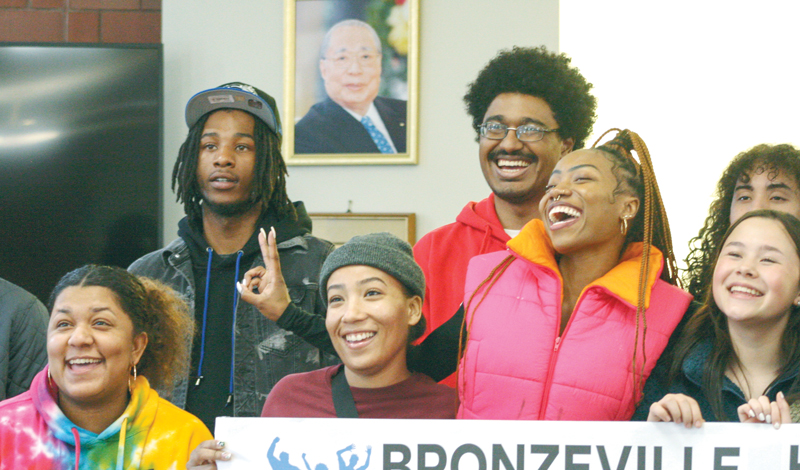
Strengthening Our Community
The Chapter Is the Headquarters
Based on Sensei’s guidance, the CEC members voted to continue developing the chapter as the headquarters for the area they encompass, where members and leaders show great actual proof in their communities. “This means leaders live in the area and feel a sense of responsibility for their community,” said James Herrmann, SGI-USA men’s leader.
Chapter Kick-off Meetings in the Community
In an effort to strengthen ties to the community, in 2025, the CEC voted to hold chapter kick-off meetings in January at rented venues located in the local communities that each chapter encompasses.
Herrmann referred to a scene in volume 26 of The New Human Revolution, in which Sensei describes a couple who ran a coffee shop near Atsuta River. At the urging of friends, they subscribed to the Seikyo Shimbun, the Soka Gakkai’s daily newspaper. Whenever they saw the smiling faces of young people from the Soka Gakkai, they were impressed by their vigor and felt renewed hope:
“Even though they dress like other young people, there’s something different about them, isn’t there? It’s like their lives are shining from within,” the wife remarked to her husband.
“Our neighbors who are Soka Gakkai members seem to be really good people, too,” the husband reflected. “I wonder if it’s through joining the Soka Gakkai that they developed their character?”[2]
Chapter-led Intro Meetings
In 2025, based on the 25 seasons of shakubuku toward November 2030, the CEC members also voted to continue the introductory meetings being held at the chapter level and empower every member to challenge themselves to do shakubuku freely, spontaneously and joyfully. Region through national leaders, meanwhile, will continue to fully support a chapter and ensure that it achieves victory.
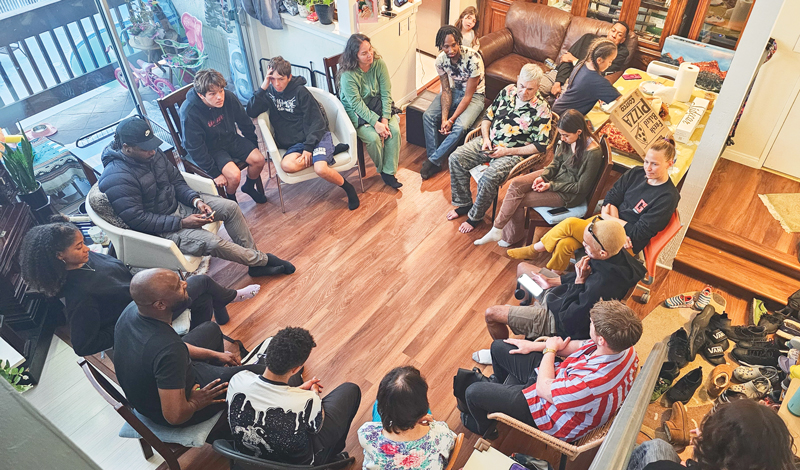
Soka Victory District Initiative Relaunches in 2025
The Soka Victory District initiative will restart in 2025 with a new set of milestones that represent the benchmarks for a healthy district. They are:
•15 attendees at a discussion meeting at least two times during the year
•15 subscribers to the World Tribune/Living Buddhism
• 2 guests receive the Gohonzon
•10 contributors to Sustaining Contribution
(Editor’s note: The Soka Victory District initiative was relaunched this year (2025) with updated, key benchmarks for a healthy district. The benchmarks are:
• 20 total attendees at a discussion meeting at least two times during the year;
• 20 people subscribed to the SGI-USA publications;
• 2 people having received the Gohonzon; and
• 10 people participating in the SGI-USA Sustaining Contribution Plan.)
National Study Rhythm in 2025
The October 2024 Living Buddhism carried the final study lecture to be completed by Ikeda Sensei before his passing last November.
From November 2024 and throughout 2025, the SGI-USA will study from two of Sensei’s core lecture series on key writings by Nichiren Daishonin, which will appear monthly in Living Buddhism. They are:
• November 2024–February 2025:
The Heritage of the Ultimate Law of Life: SGI President Ikeda’s Lecture Series
• March 2025–December 2025:
The Opening of the Eyes: SGI President Ikeda’s Lecture Series
Starting in December, the study department will continue its monthly prelectures for region through national leaders. They will no longer be held live but rather prerecorded with a link sent out to be viewed.
The following study exams will also be held next year and into 2026:
• Introductory Exam: April and October (every year)
• Intermediate Exam: December 2024
• Advanced Exam: January 2026
• Ikeda Wisdom Academy Exam: February 2025
Coming soon: Optional online Gosho-based study courses for all members. Look out for the first course in December 2024.
Let’s raise the banner of victory from our communities.
SGI Vice President Yoshiki Tanigawa closed the conference, calling the initiatives for 2025 “excellent and very timely for advancing kosen-rufu in the U.S.” (see full speech on pp. 9–10).
He said the SGI-USA’s focus on strengthening and rooting ourselves in our communities is aligned with Ikeda Sensei’s efforts as a youth to lead the historic Kamata Campaign, in which he offered three guidelines:
1) Let’s start with chanting daimoku;
2) Let’s share our experiences in faith; and
3) A guideline crucial to expansion, “Let’s treasure our neighbors.”
“I am convinced that by making concrete progress next year based on the points discussed today, you will open the doors to a ‘new SGI-USA,’ undoubtedly creating earth-shattering momentum,” he said. “I will happily support in any way I can. From the depths of my heart, I am praying for your great success!”
October 4, 2024, World Tribune, pp. 6–8
You are reading {{ meterCount }} of {{ meterMax }} free premium articles

